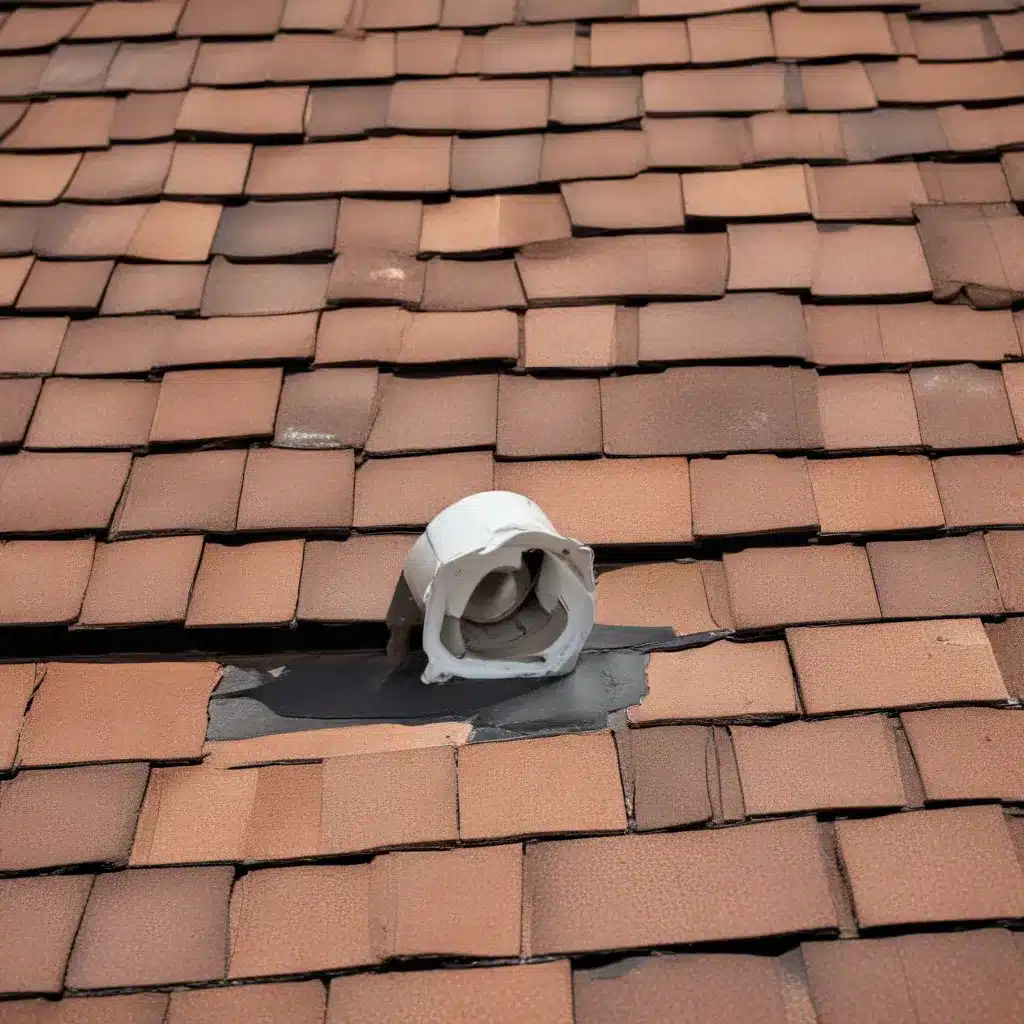
Understanding the Signs of Roof Leaks
As an experienced roofing contractor, I’ve seen my fair share of roof leaks over the years. These pesky issues can be a real headache for homeowners, causing water damage, mold growth, and even structural problems if left unaddressed. But the good news is that with the right knowledge and techniques, roof leaks can be detected and repaired effectively.
One of the first signs of a roof leak is often water stains on the ceiling or walls. These discolored patches can be a clear indicator that water is infiltrating your home from above. Another telltale sign is the presence of mold or mildew, which thrive in damp environments. Musty odors or a general feeling of dampness in certain rooms can also be a red flag.
Interestingly, some roof leaks may not be immediately visible, but can still cause significant damage over time. For example, a small crack or hole in your roofing material can allow water to slowly seep in, gradually rotting the underlying wood or insulation. This type of “silent” leak can be trickier to detect, but it’s just as important to address.
Identifying the Causes of Roof Leaks
Now, the tricky part is figuring out what’s causing the leak in the first place. As a roofing contractor, I’ve encountered a wide range of culprits, each with its own set of solutions.
One of the most common causes is simple age and wear and tear. Over time, roofing materials like shingles, tiles, or metal panels can deteriorate, leading to cracks, holes, or loose seams. This is especially true in harsh climates or areas with frequent severe weather. Proper roof maintenance and timely replacement are crucial in preventing these types of leaks.
Another common issue is poor installation or workmanship. If your roof was not properly installed or flashed around chimneys, vents, or other penetrations, it’s more susceptible to leaks. Sloppy roofing work can also lead to gaps, cracks, or improper sealing that allow water to infiltrate.
Interestingly, some roof leaks can be attributed to underlying structural problems in your home. For example, if your house has settled or shifted over time, it can cause the roof framing to become misaligned, creating openings for water to enter. In these cases, a more comprehensive assessment and potential structural repairs may be necessary.
Effective Roof Leak Repair Techniques
When it comes to repairing roof leaks, there’s no one-size-fits-all solution. The approach you take will depend on the specific cause, the extent of the damage, and the roofing materials used on your home.
For minor issues, like small cracks or holes in the roofing material, a simple patch or sealant application may do the trick. This is a relatively straightforward DIY project that many homeowners can tackle with the right tools and materials. However, it’s important to ensure that the repair is properly executed to prevent future leaks.
In more complex cases, a full roof replacement may be the best course of action. This is especially true if the roof is nearing the end of its lifespan or if the damage is widespread. While a roof replacement can be a significant investment, it’s often the most effective way to ensure a long-lasting, watertight solution.
One technique I’ve found particularly useful for identifying and repairing hard-to-find leaks is the use of infrared imaging. This specialized camera can detect temperature differences in your roof, which can reveal the presence of moisture or hidden problems. By pinpointing the exact location of the leak, we can target our repair efforts more efficiently, saving time and money.
Addressing Safety and Energy Efficiency Concerns
When it comes to roofing, safety should always be the top priority. As a responsible contractor, I make sure to follow all industry safety standards and best practices when working on a roof. This includes proper fall protection, securing ladders, and ensuring the work area is clear of debris.
It’s also important to consider the energy efficiency of your roof. A well-insulated and properly ventilated roof can have a significant impact on your home’s overall energy consumption and comfort. By addressing any insulation issues or airflow problems during the repair or replacement process, we can help you save money on your utility bills and reduce your carbon footprint.
Maintaining Your Roof for Long-Term Performance
Once the roof leak has been repaired, the work isn’t quite done. Proper maintenance is key to ensuring the longevity and continued performance of your roofing system.
Regular inspections, clearing debris, and addressing minor issues promptly can go a long way in preventing future leaks. I always recommend that my clients schedule a professional roof inspection at least once a year, or after any major weather event. This allows us to identify potential problems before they escalate and ensure that your roof is in top condition.
It’s also important to keep an eye out for any changes or signs of deterioration, such as cracked, curling, or missing shingles. Addressing these issues quickly can help extend the lifespan of your roof and save you from costly, large-scale repairs down the line.
Midland Roofers: Your Trusted Partner
At https://roofersmidland.com/, we pride ourselves on being the go-to experts for all your roofing needs in the Midland area. Our team of experienced professionals is dedicated to providing exceptional service, quality workmanship, and long-lasting solutions.
Whether you’re dealing with a persistent roof leak, need a full roof replacement, or want to explore energy-efficient roofing options, we’ve got you covered. We use the latest techniques and technologies to ensure accurate diagnostics and effective repairs, and our commitment to safety and customer satisfaction is unparalleled.
Don’t let a roof leak become a bigger problem. Contact Midland Roofers today to schedule an inspection or discuss your roofing needs. Together, we’ll work to keep your home safe, dry, and energy-efficient for years to come.

